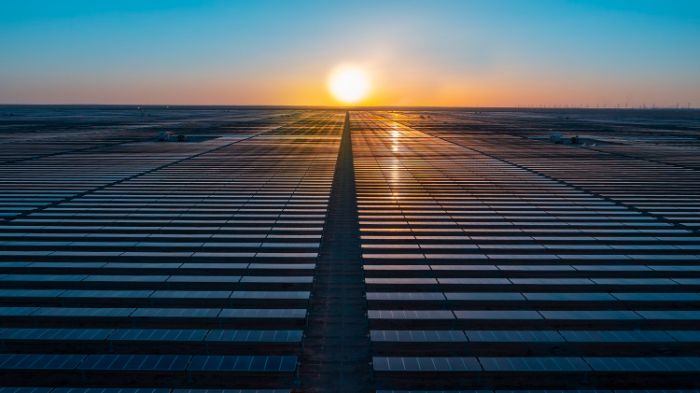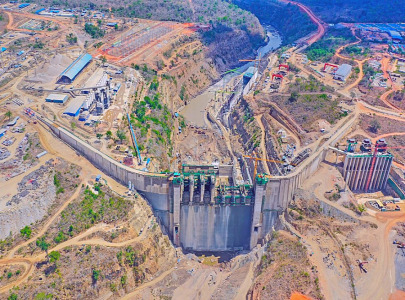Innovation can counterbalance rising material costs

Since the fourth quarter of 2020, the price of a solar module globally has increased by 30 percent, which has led to delays with solar tenders and the deferment of projects
Since the fourth quarter of 2020, the price of a solar module globally has increased by 30 percent, which has led to delays with solar tenders and the deferment of projects. When trying to pinpoint the start of rising solar material prices, the current cost increases can be traced back to mid-2020 when production from two major silicon manufacturing plants in China halved.
According to Bernreuter Research, the share of polysilicon in panel costs has increased from 16 per cent to 35 percent this year.
“[There was also] an increase in the costs of other raw materials and freight costs globally, and the general increase in demand for solar, as more governments embrace this cheaper, cleaner source of electricity,” says Ayham Mkalalati, Head of On-Grid Business at SirajPower.
While the cost of the raw material is undisputed, some believe that the response of manufacturers increased the impact of polysilicon rises.
“A rise in the cost of the raw material will not have an equivalent increase in its overall cost,” says Professor Tadhg O’Donovan, Head of the School of Engineering and Physical Sciences at Heriot-Watt University Dubai. “The main reason for the recent price hike of polysilicon seems to be rather economic.”
The research found that the price hike was a result of panic buying by manufacturers of wafers, cells and modules who, in the hope of hedging against further price increases, opted to buy as much polysilicon as possible. However, O’Donovan says that wafer, cell and module makers can either accept lower margins or pass on the higher costs of using polysilicon onto their final customers.
Project delays
The fluctuations in polysilicon prices have led to the delay of some projects, with some utility-scale solar projects being held back to 2022 or 2023 when it is hoped that prices have reduced.
“The current price cannot support the continued development due to the low pre-budget cost,” said Xiang Li, General Manager for Middle East & Africa at JinkoSolar. “But demand for modules remain strong in the distribution market and in some countries.”
Others speak of a detrimental impact on the solar industry globally. “Depending on the project type, solar modules typically account for 50 percent of the total project cost base, and the other major components could account for up to 20 percent, where any cost increase to these components impacts the project economics,” Mkalalati notes.
“There have been mixed [impacts] in the market in response to these effects, but in such extreme unforeseen circumstances, there is generally a fair consideration or understanding by the industry.”
Mkalalati says some tender deadlines were extended to allow developers to mitigate these risks, while some developed projects were put on hold until pricing normalises. “The majority of the industry has had to adjust their pricing for projects under development,” he adds. “I would say ‘delay’ is the only effect I see on the development of solar power projects in the short-term.”
Such price hikes come on the back of similar trends across sectors due to the COVID-19 pandemic which, for Gabor Eisenbart, Founder of SunMoney Solar Group, brought with it a substantial disruption to the business world. “Production was stopped or slowed down for a majority of manufacturers and lots of developments had to be put on hold as well,” he adds.
Temporary spike
After concerns over the past couple of months on the potential rise in costs of developing solar energy due to increasing polysilicon prices, regional experts believe such market turbulence is temporary.
“Innovation is one of the biggest drivers of the renewable market,” said Gabor Eisenbart, Founder of SunMoney Solar Group. “So, even if a situation arises where prices remain on the higher side, there will soon be a new innovative solution to solve the problem. One also needs to keep in mind that solar development prices have decreased dramatically in the last two decades, and this issue will not change the trend.”
Solar panel efficiency is improving over time, as are the inverters. Eventually, such factors will converge to balance material costs.
According to Allied Market Research, crystalline silicon, which includes both polysilicon and monosilicon, is one of the most widely used semiconductor materials in PV technology to manufacture solar cells. As such, it occupies more than 90 percent of the total PV market revenue due to its many benefits. “However, the increased cost of polysilicon could eventually increase the demand and innovation for other materials,” O’Donovan added.
For Babette Cilliers, Commercial Manager at ALEC Energy, the larger issue when it comes to increased cost of solar projects is the shortage of shipping containers and the rise in raw material costs in general. She believes rising costs of polysilicon is simply a symptom of a much larger problem. “However, there are alternative materials and technologies available which could replace the use of polysilicon in solar products,” she said. “The shortage might be the turning point for manufacturers to focus more on finding alternative materials in their manufacturing processes.”
Prudent investment
Experts believe that even with the current increases, the cost savings of deploying solar energy are significant. “These savings can, in turn, be included in plans for future expansion of companies and it is a real, tangible cost-saving,” Cilliers says.
Across the board, experts do not foresee a major change to the solar landscape in the region in the future, with more room to grow within the industry at large. “It’s not a race to the bottom, it’s a race to cost-effectiveness – for now and into the future,” says Farid Awlaqi, TAQA Group’s Executive Director of Generation.
“If you look at the targets for reducing carbon emissions and mitigating climate change, regional and global governments have made decarbonisation a priority. There is investor appetite looking for opportunities, such as those provided by solar PV.”
Collaboration and adaptability will prove crucial in finding solutions within that realm, with an array of players in the markets. But ultimately, the industry will need to be patient, understanding, and resilient in such times.
“The market pricing will eventually return to normal, and probably decrease in the near future,” Mkalalati says. “Solar still makes sense today, even at the increased pricing levels for many applications, and the industry should work on improving the various angles that have room for optimisation or finding creative solutions that overcome today’s pricing challenges.”
Eisenbart shares a similar sentiment, describing solar as a long-term business, wherein business plans are developed and calculated for two to three decades at a time.
“Considering how vital the innovation, development, and implementation of renewable energy is for tackling climate change, it remains one of the most viable future-aware businesses to be in,” adds Eisenbart. “It may be slow money, but it’s definitely sure money when we talk about the solar energy space”.
Energy & Utilities - Middle East and Africa Market, Outlook Report 2023.
This must-have report for industry players offers a thorough understanding of the latest developments, challenges, and opportunities in the region, supported by data, analysis, and expert insights.








